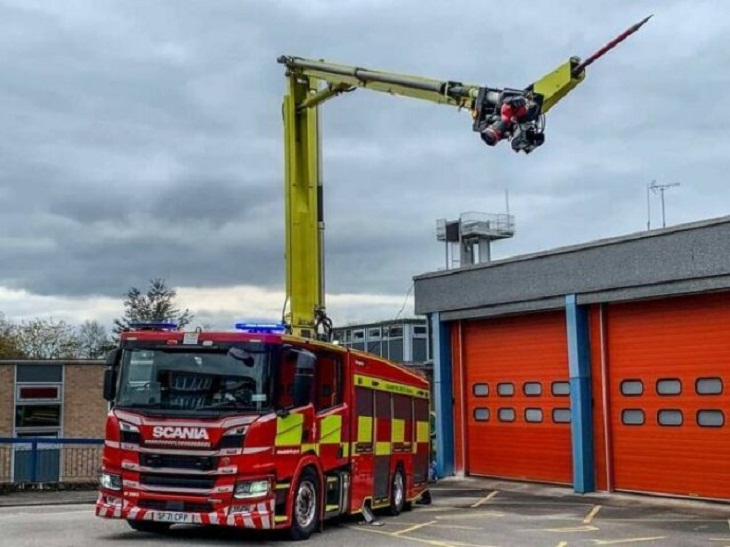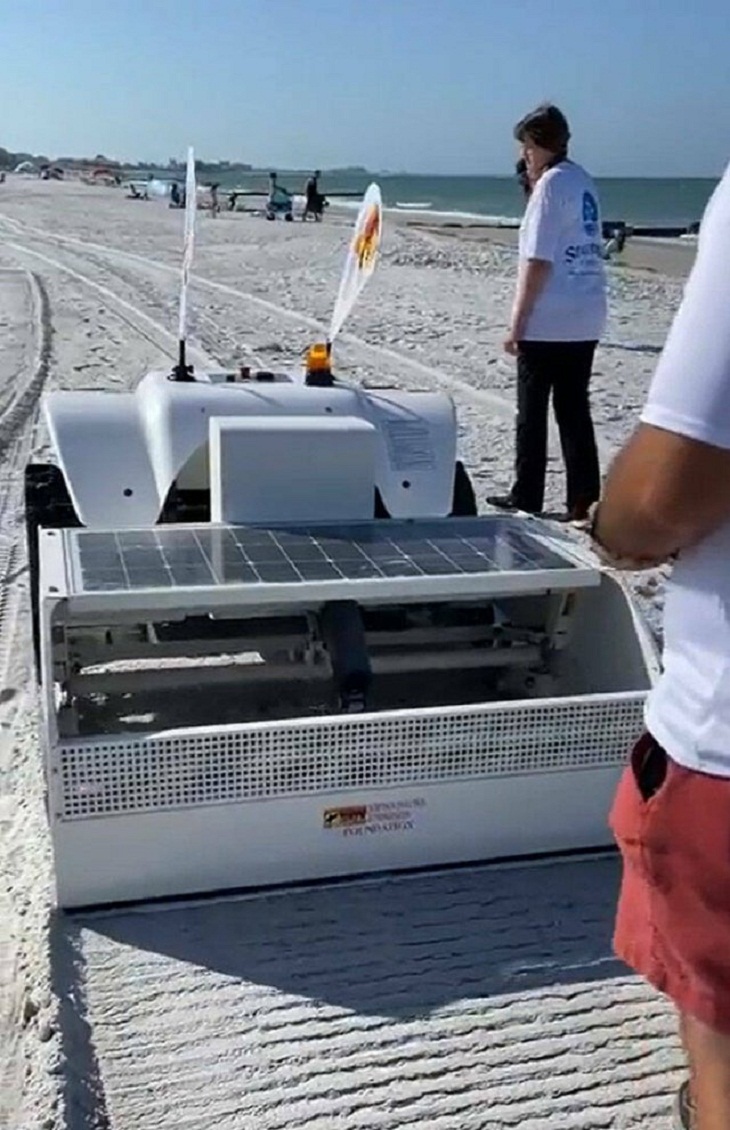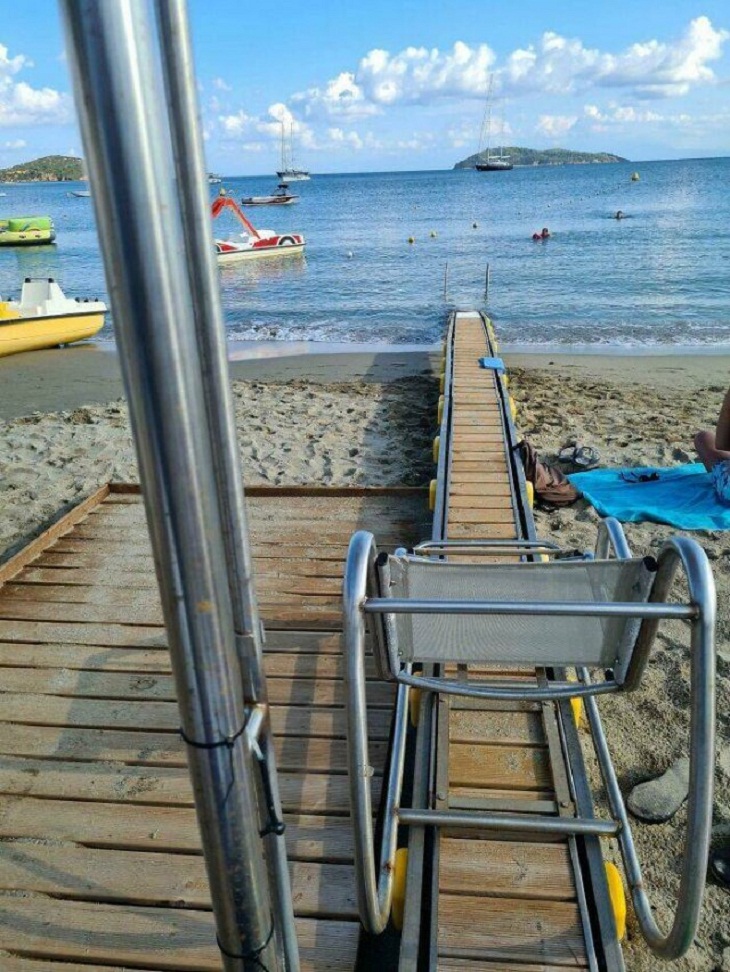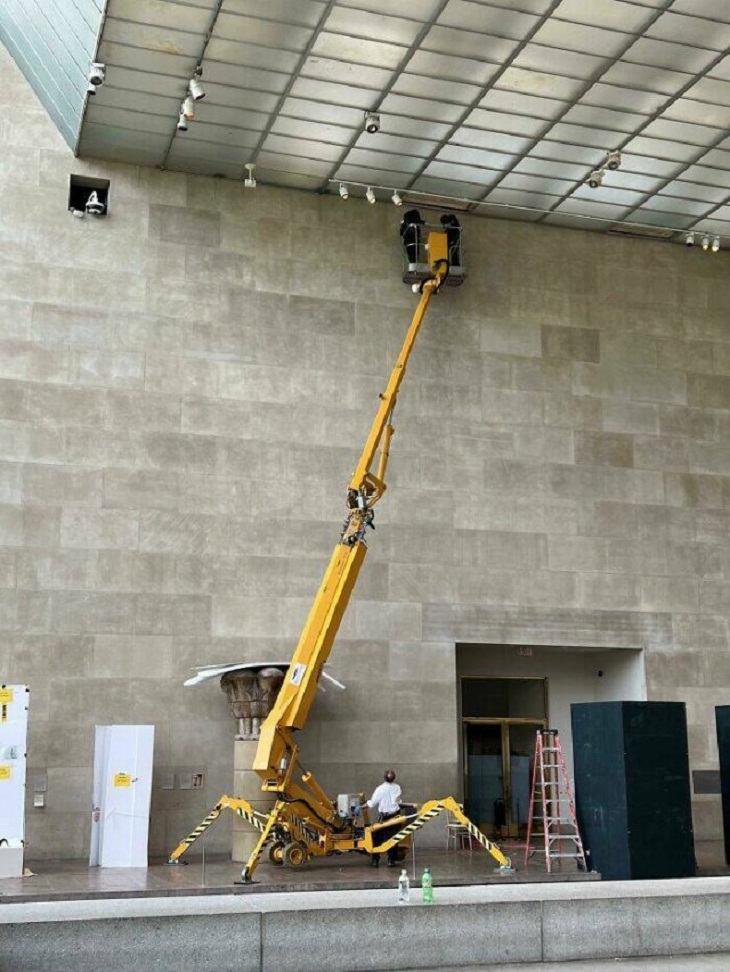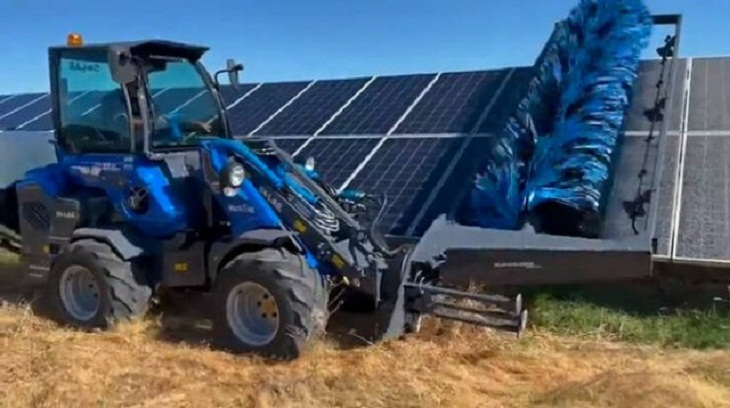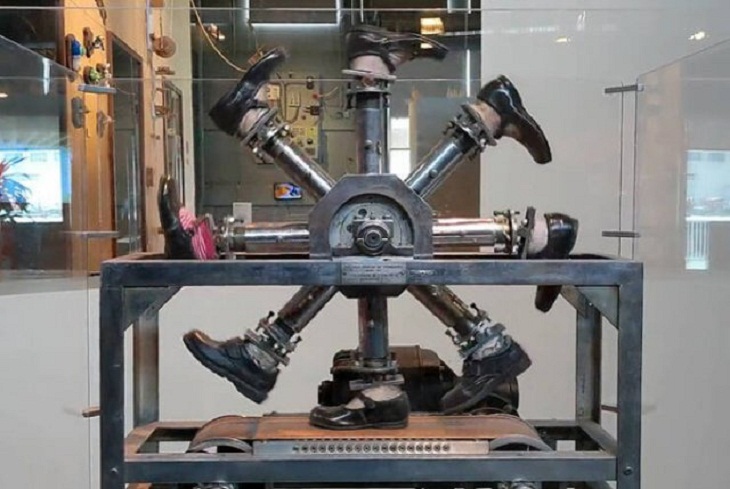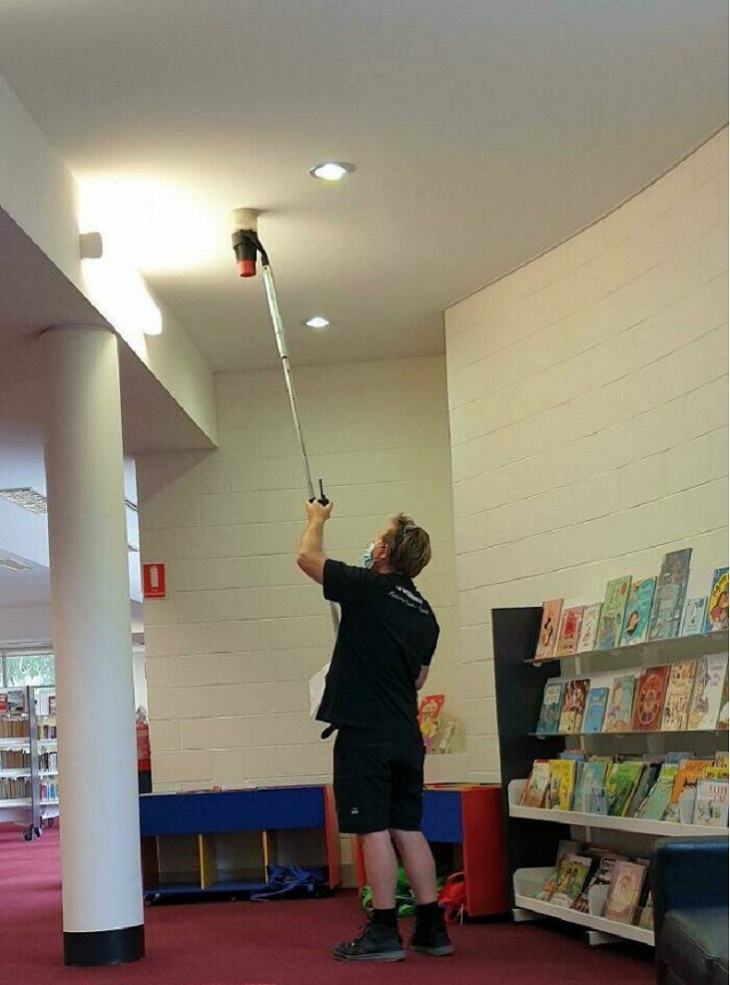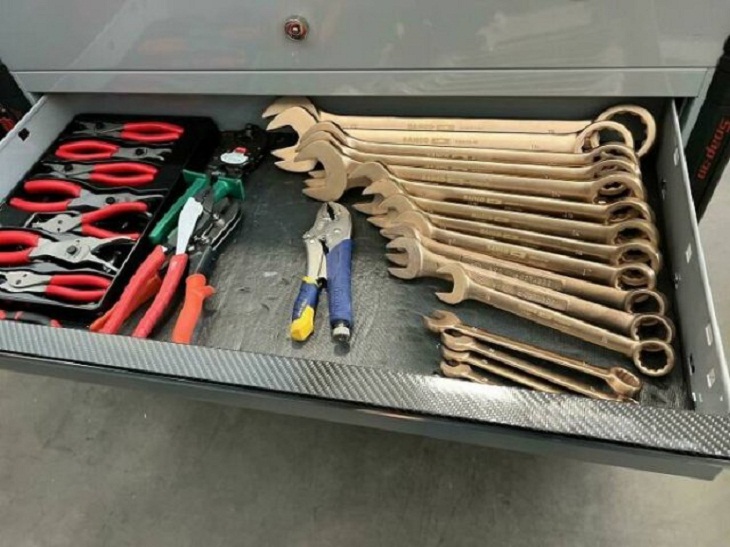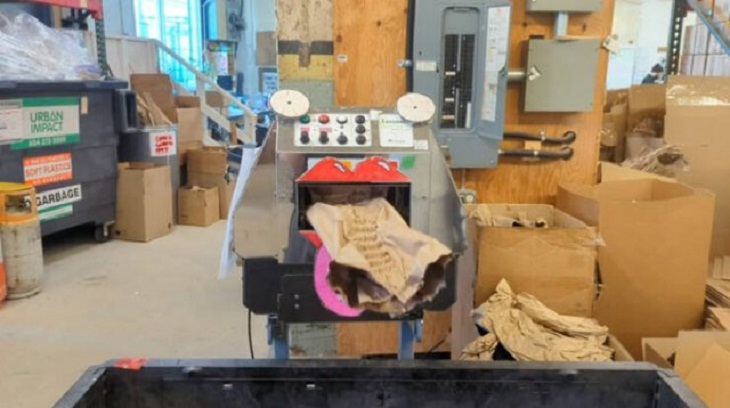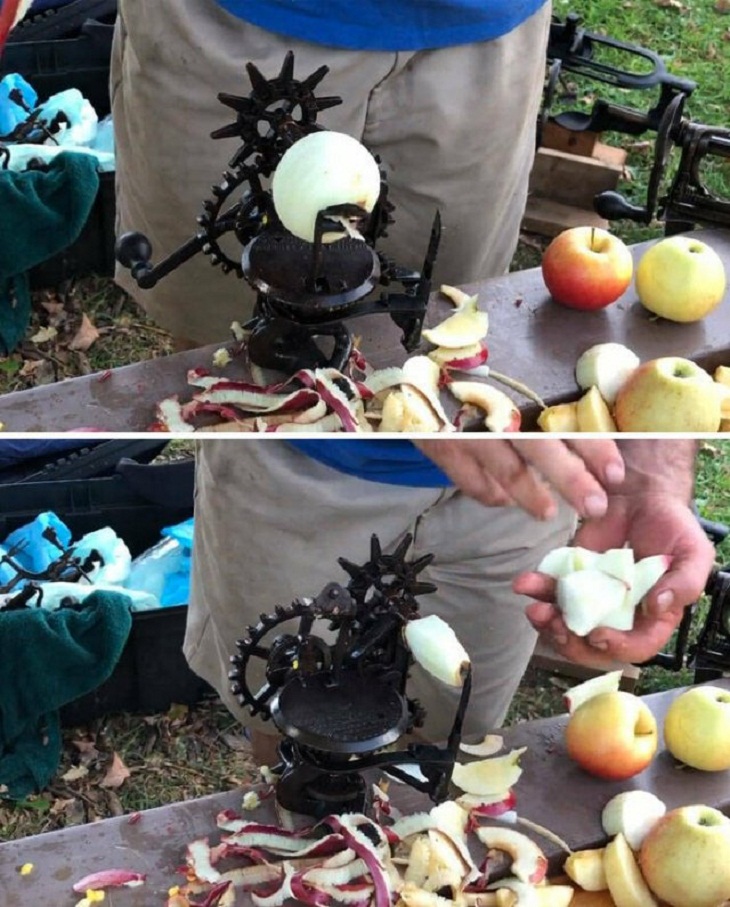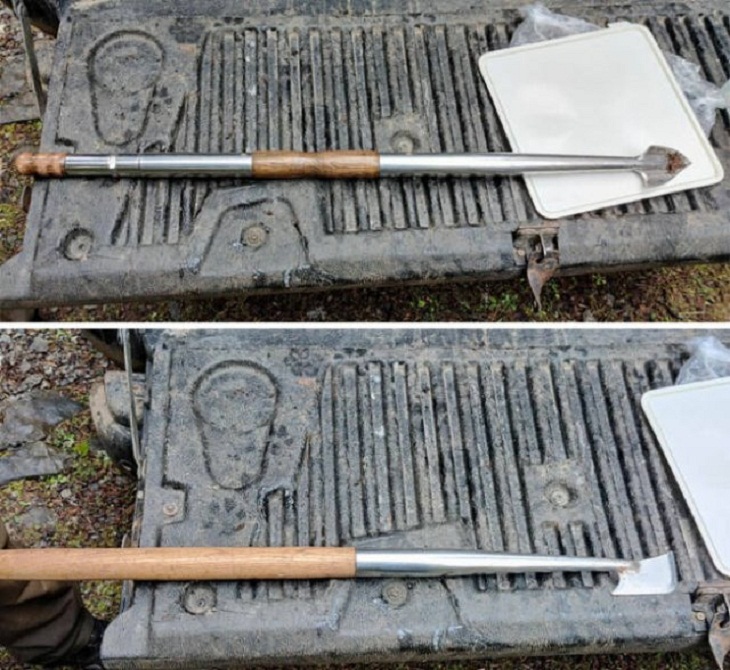The Scania P360 fire truck is equipped with a "Scorpion Stinger", which enables it to enter a structure and send water directly into a fire without endangering firefighters.
2.
This beach-cleaning robot is designed to keep beaches clean. It sifts sand, rakes seaweed, and even picks up small pieces of garbage hidden beneath the sand.
3. 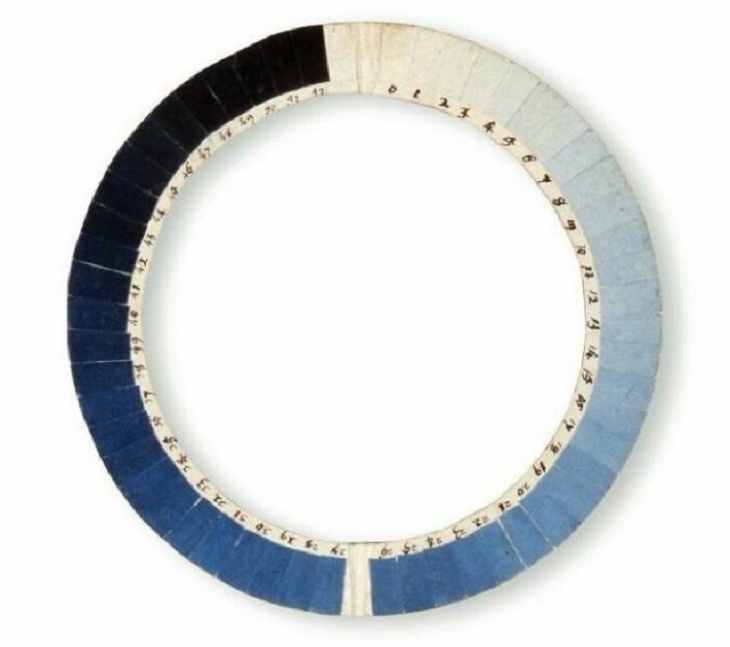
The cyanometer, invented in 1789 by Swiss physicist Horace-Bénédict de Saussure, was designed to measure the blueness of the sky.
Saussure had become fascinated by the blueness of the sky when he traveled to the base of Mont Blanc as a young student. He climbed to the summit 27 years later, bringing with him pieces of paper in various blue tones to hold up to the sky and match its hue. In the next few years, Saussure began to work on his hypothesis and came up with the idea for the cyanometer - a circle of paper swatches dyed in deep blues, shading from white to black. Sadly, the numerous measurements carried out with his instrument provided little meaningful information, and the cyanometer lost appeal as a scientific tool.
4.
A wheelchair that slides into the sea for those with disabilities. Access to the beach and water for those with impairments is made possible by chairs like these.
5.
Meet the “Spider”. Workers may access high-up confined spaces with this self-propelled boom-style transportable elevating work platform. The operating heights of these machines range from 12 to 45 meters (39 to 147.6 feet). They can drive through rugged terrain, pass through narrow gates, and set up on slopes.
6.
Now that’s a great way to clean solar panels!
7.
A shoe-testing machine from the 1940s. It was designed by the US National Bureau of Standards to test the soles of children's shoes. The bottom belt is sandpaper.
8.
This device evaluates smoke alarms. It produces a cloud of smoke after tightly enclosing the unit. From there, someone operating the control panel may determine whether or not it is functioning properly.
9.
Made of copper beryllium, these non-sparkling wrenches are designed for use in potentially explosive environments, where traditional steel tools may create sparks. They are particularly useful when working with hydrogen, which is a highly inflammable gas.
10.
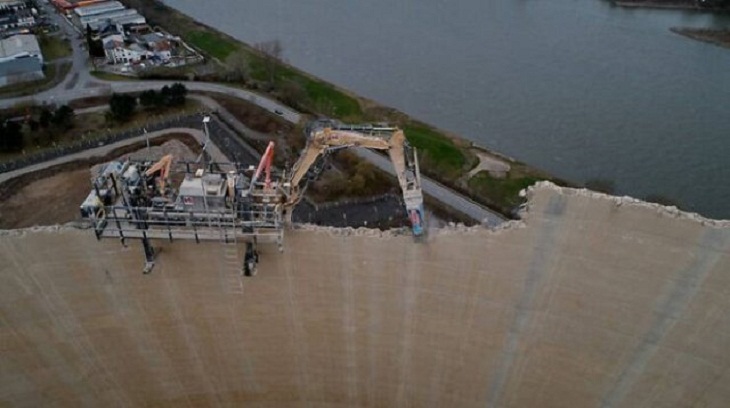
To dismantle the tall cooling towers of nuclear power plants, these remote-controlled special excavators are often used. The machine rides along the lip of the cooling towers, taking bites at a time from the structure, which can be as high as 180m (about 600ft).
11.
A network cable comber. It conveniently straightens and organizes single cables into neat cable bundles. You can easily draw many cords at once with the aid of this gadget, keeping your workspace free of tangles and mix-ups.
12.
This ‘Paper Crumpler’ is used for padding boxes to package and ship. The device is designed to store and dispense a single roll of paper and is used by small businesses or warehouses. It features built-in cutting teeth that allow the paper to be easily torn away.
13.
Star apple parer and slicer is a rare vintage machine, which was patented by Calvin A. Foster of Fitchburg, Massachusetts on July 11, 1871. This turntable device slices apples in one continuous motion. The apple is cut with a slicing knife as it reverses direction.
14.
These are truffle spades that are used to extract truffles, a fungus that grows underground at or near the base of trees. They are most commonly found in France and Italy and can cost up to $2300 per pound! The practice of truffle hunting and extraction in France and Italy has been passed down for centuries. Today, truffle hunting plays an invaluable role in the lives of rural Italian communities. Truffle hunters usually live in rural areas and small villages.
The flat truffle spade here is for white truffles, which tend to grow in softer soil. The spear-shaped one is for black truffles, which are found deeper and in more rocky soil.
Share this post with friends and family!

